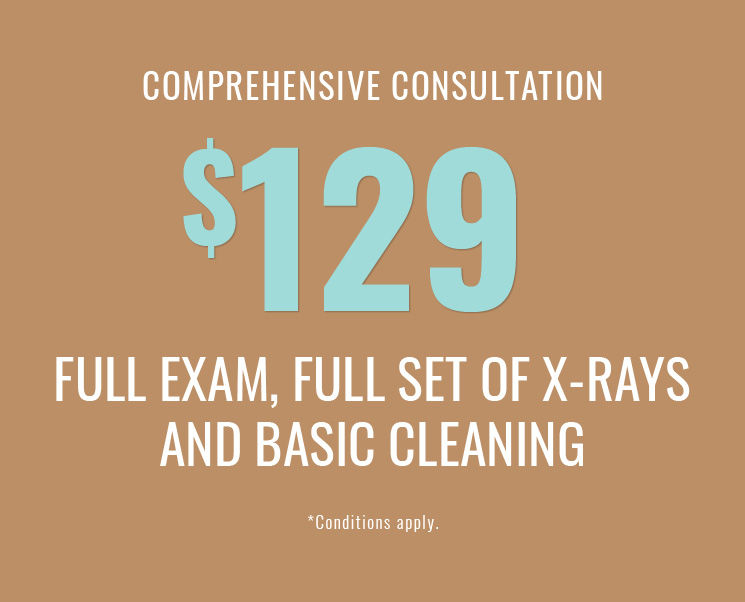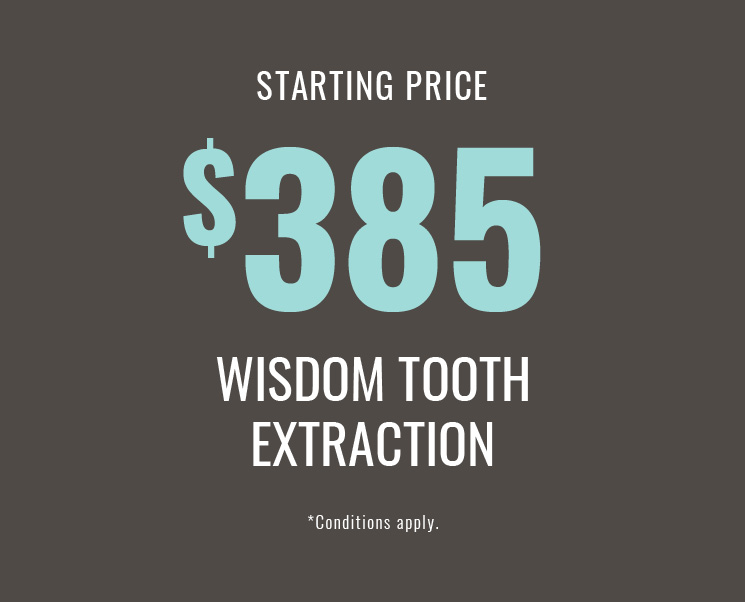Comprehensive Periodontal Treatment Options
Periodontics is a branch of dentistry that is focused on the structures that support the teeth and the diseases that affect them. The oral care professionals at Encino Family Dental are more than capable of addressing any and all of your periodontal needs.
Table of Contents
ToggleWhat Is Periodontal Disease
Periodontal disease is characterized as a bacterial infection affecting the gums and bones in the mouth. Often, patients do not realize they have it because they do not experience pain or other distressing symptoms. However, if left unchecked, periodontal disease can result in tooth loss and severe damage to the gums.
At Encino Family Dental, we take this disease very seriously. Our dental professionals will do everything they can to prevent this from happening to our patients. We urge all of you to practice good oral hygiene and visit us regularly.
Risk Factors for Periodontal Disease
- Pregnancy
- Family History of Periodontal Disease
- Heart Disease or Diabetes
- Poor Oral Hygiene
- Tobacco Use (Smoking or Chewing)
- Certain Medications
The Two Major Stages of Periodontal Disease
Gingivitis
Gingivitis is a mild form of periodontal disease that only affects the gums. Symptoms to watch out for are red, swollen gums that bleed during brushing or flossing. Gingivitis is easily reversible when diagnosed and treated early. However, if untreated, it can develop into periodontitis.
Periodontitis
A more advanced form of periodontal disease, periodontitis occurs when bacteria penetrate deep into your tissues, adversely affecting the bones that support your teeth. Without treatment, this can loosen teeth from their sockets or even cause them to fall out. It can also lead to more serious health issues in the future.
Treatment Procedures
Regular checkups with us allow us to determine the level and frequency of cleaning that you require. If we see signs of periodontal disease, we may recommend a scaling and root planning procedure. This involves numbing and deep cleaning the affected areas, which are normally found above and below the gum line. During this process, we will remove as much of the bacteria and tartar buildup as we can.
To eliminate the bacteria that can’t be physically removed, we may have to use adjunctive tools such as antimicrobial rinses and antibiotics. If these do not improve your condition, you may need to undergo dental surgery. We will discuss all aspects of the surgical procedure with you in detail should this need arise.

Preventing Periodontal Disease
You can protect yourself from periodontal disease by practicing good oral hygiene. You should:
- Brush your teeth for about two to three minutes at least twice a day. Focus on both the teeth and the gums. Remember to be gentle when cleaning your gums by using soft, circular motions. Brushing too hard can lead to other problems.
- Brush your tongue whenever you brush your teeth.
- Floss once a day. Flossing at night is ideal as it removes the built-up tartar that has accumulated between your teeth throughout the day.
- Use mouthwash.
- See our dentist every three to six months.
Root Canals
The Need for a Root Canal
The most common cause behind needing a root canal is an untreated cavity. If it has become very large and reaches the tooth root, a root canal is often necessary. Another reason is facial trauma. For example, accidents while playing sports can result in a fractured tooth that requires a root canal to address.
Contrary to popular belief, a root canal is not extremely painful. Technology has come a long way, and our dental professionals are up to speed on the latest techniques.
Root canals can typically be completed in one session. However, depending on the severity of your tooth’s condition, we might have to schedule additional appointments.
We will walk you through the entire process and answer your questions before your root canal appointment, so you’ll know exactly what to expect. You can be confident knowing that we will do all that we can to make the procedure as stress-free as possible.
Process
- First, we determine the reason for the root canal.
- Next, we administer an anesthetic to the affected area.
- Afterward, we clean and disinfect the affected tooth and pulpal tissue.
- Finally, we fill the area previously occupied by the nerve with a material that prevents leakage and further contamination.
Tooth Extractions
Reasons for Extraction
Your teeth may need extraction for several reasons. It might be because they are badly decayed, broken or damaged by severe periodontal disease. A tooth may also need to be removed because it is positioned in such a way that it is difficult to clean, which is often the case with wisdom teeth.
Wisdom Teeth
Wisdom teeth are your third molars, and they typically do not serve a purpose. Often, they end up causing problems such as cavities and bone loss. The reason for this is because wisdom teeth are located so far back in your mouth and in such an inconvenient position that they are almost impossible to clean properly. If there isn’t enough room in the mouth for wisdom teeth, often push their way through, causing movement and crowding.
Post-Extraction Reminders
Here are some things to keep in mind after extraction:
- Follow a soft food diet for the first couple of days after tooth removal.
- Make sure to avoid food that breaks down into tiny pieces as these can get stuck in the extraction site.
- As much as possible, chew your food on the side opposite the one where your tooth was removed.
- Some bleeding is perfectly normal.
- Don’t rinse, spit, or drink through a straw for at least 24 hours after extraction. Doing so could dislodge the blood clot that forms on the extraction site, slowing down healing.
- Don’t drink hot beverages.
- Bruising and swelling may affect the extraction site, either inside your mouth or on your face. This is natural and no cause for alarm.
- Swelling can be minimized by alternating between a warm and cold compress for 20 minutes. This increases blood flow and promotes healing.
- Avoid drinking alcohol and smoking during the first two to three days after the extraction, as these can slow down the recovery process. Smoking, in particular, can lead to a painful condition known as dry socket.
- Remember to keep the extraction site clean, just like any other part of your mouth. When cleaning, be very gentle during the initial healing stage.
- Rinse with warm salt water within the first two to three days after tooth removal. This helps keep the wound clean and expedites recovery at the same time.
- Avoid using regular mouthwash for the first week after your tooth is removed.
Post-Extraction Recovery
You should start feeling back to normal within a week after having your tooth removed. Should you need pain relief medication, we suggest taking ibuprofen. If you still feel discomfort, let us know. We can prescribe something stronger to help you manage the pain.
Crowns, Onlays, and Bridges
Crowns
A dental crown serves as a replacement for a tooth that is cracked, broken, misshapen, decayed, worn down or severely discolored. When the damage is too much for a filling to address, this may be the most suitable option.
Onlays
An onlay or partial crown is a good choice when only a portion of the tooth is compromised. This is a much more conservative alternative to a full crown. Since only the affected area of the tooth is incorporated into the restoration design, the rest of the natural tooth structure is relatively untouched.
Bridges
This is an appropriate option when you are missing one or more teeth. This is similar to a crown but involves bridging at least three teeth as opposed to just a single tooth. Please note that the teeth in front as well as behind the missing tooth may need to be involved to ensure proper restoration.
Process
First Visit
Installing a crown, onlay, or bridge typically takes a couple of visits to our office. The first one involves:
- Numbing the affected area and removing the damaged parts of the tooth
- Rebuilding the tooth or trimming it if necessary
- Taking a mold impression of the tooth once it has been rebuilt
- Sending the mold impression to a carefully chosen laboratory, where a restoration that fits the tooth is created
Second Visit
Once your permanent replacement is ready, your second visit can be scheduled. During your appointment, we will:
- Check to see if the permanent crown is a precise fit and make adjustments as necessary until the measurements are correct
- Use a series of agents that will permanently cement the restoration and fix it in place
- Make certain that the fixture fits seamlessly as well as looks and feels like your natural teeth
Helping You Choose the Most Appropriate Option
All of our treatment methods include an in-depth process wherein we determine the most appropriate option for you. We typically suggest that you choose a more conservative alternative that preserves your natural teeth structure.
Find the Option That Fits You
At Encino Family Dental, we are more than happy to tell you about the best treatment options for your individual situation. Reach out to us so we can discuss your needs further.
Invisalign
This is a dental device that functions similar to braces. The main difference is that Invisalign is virtually invisible, hence the name, and removable. This makes it incredibly convenient because it places control in the hands of the patient. Aside from that, it is also comfortable and — in many cases — more affordable than traditional metal braces. Invisalign also allows you to see what its results will be even before getting started. If you have any questions about this wonderful innovation, we would be more than happy to answer them.
Veneers
What They Are
Veneers are thin ceramic shells that bond to the front of your teeth, masking imperfections such as stains, chips, and discolorations. They are generally placed on any one or a combination of a person’s six to eight front teeth. We offer diverse shapes and shades. Our team wants you to be completely satisfied with the results!
Veneer Installation
Installing veneers is a conservative procedure, often done with minimal tooth cutting. The installation process requires a precise and patient hand. Fortunately, our dental professionals are more than capable of performing this task.
Whitening
Your teeth darken due to different factors, such as age, smoking, diet, and the use of certain medications. Professional teeth whitening is a simple and safe way to address tooth discoloration caused by these habits, making your smile even brighter than it is now.
How It Works
We typically use agents that have either hydrogen peroxide or carbamide peroxide as the main active ingredient. However, our formulations may also contain potassium fluoride, which helps make teeth stronger, fights against cavities, and minimizes sensitivity.
Customized Whitening Tray
We first create a whitening tray that is customized just for you by taking one or two impressions of your mouth. Afterward, we provide you with a whitening agent that you can use on your teeth when and where it’s most convenient for you. This gives you control over when, where, and how much you whiten your teeth. Whenever you need more of the whitening agent, just let us know. We won’t have to take another impression because you’ll already have your own personalized whitening tray.
Your Whiter Smile Is on Us
If you are consistent when it comes to your recommended checkups and cleanings with our dental professionals, then your teeth whitening is on us! Your whitening tray will be free of charge, and we’ll even give you the whitening agent every six months. This is our way of thanking you for taking care of your dental health.
Cavity Prevention
Sealants
At Encino Family Dental, we advocate preventive and proactive dentistry. Sealants are a quick and simple way to prevent the formation of cavities in children and adolescents. These are used to fill in the deep grooves and pits on teeth.
By smoothing the surface of teeth, sealants make them less likely to trap cavity-causing bacteria. This doubles as a great way for kids to have clean teeth without the constant need to bug them to brush. Sealants are best applied when the child’s teeth are just coming in. This method offers the most protection.
Fluoride
This is also an important tool in the prevention of tooth decay. Fluoride is a topical agent that has been proven in countless studies to reduce the incidence of cavities in children and adults alike.
Easing Dental Anxiety
Visiting the dentist is known to evoke feelings of stress and anxiety in some people. Although we always strive to create a comfortable environment, sometimes patients still find it difficult to relax. Not to worry! We have various options that will help patients reduce their dental anxiety and stress.
Nitrous Oxide
Also known as laughing gas, this is a powerful yet safe tool used to eliminate the stress that comes with being in the dentist’s chair. This can be used on patients of any age, reducing their anxiety and making the experience less stressful for their parents.
The effects of this substance are short-lived and easily reversible. Once the dental work is completed, all you have to do is inhale pure oxygen for a few minutes, and you’ll be able to return to your normal routine.
Anti-Anxiety Medication
Anti-anxiety medication in the form of a small tablet can be taken shortly before a dental treatment. Its effects range from relaxation to mild amnesia. We can talk about this option with you. Our goal is to make your time in the dentist’s chair as pleasant and comfortable as possible.
HAPPY CLIENTS

Dave C.

Craig W.

Tara B.



